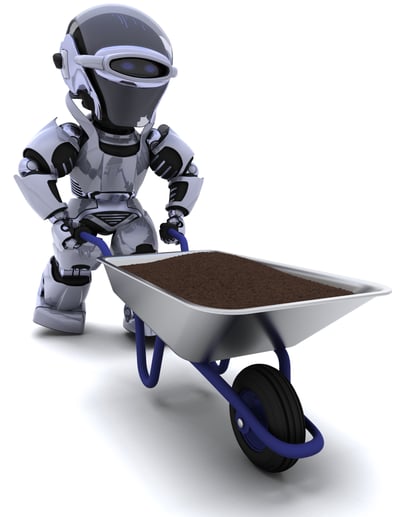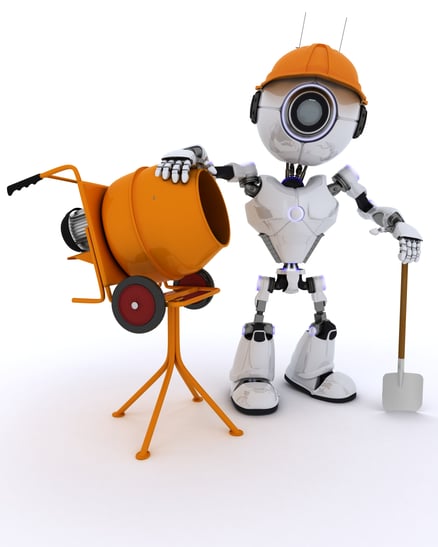Robots and Construction: Is your job at risk?
There is an ongoing debate about the future of work in construction. Construction jobs are set to be disrupted by robotics, and current construction workers must prepare themselves with new tools and reskill themselves if they want to stay in the game. Construction has always been a dangerous profession where one wrong move can lead to injury or even death. Construction sites are messy, congested places that can also pose health risks for employees who don't have training in hazardous material handling. Robots may soon take over many of these tasks, which will free up human labor for more skilled tasks like welding or building scaffolding.
 The use of robots on construction sites will change how jobs are done but it won't mean that humans are unemployed forever. Construction companies will need a workforce that is trained to work with robots and other new technology. Construction workers who have experience in robotics, machine learning, or advanced manufacturing will be able to find jobs that are both safe for humans and productive for the companies they work for.
The use of robots on construction sites will change how jobs are done but it won't mean that humans are unemployed forever. Construction companies will need a workforce that is trained to work with robots and other new technology. Construction workers who have experience in robotics, machine learning, or advanced manufacturing will be able to find jobs that are both safe for humans and productive for the companies they work for.
This means that construction workers must start preparing today if they want to stay relevant in their field when robots start to take over.
If you're a construction worker, it's time to start preparing for the future, so you don't get left behind. Construction workers should look into reskilling in robotics and machine learning today if they want to stay relevant in their field when robots start taking over construction sites. Construction companies will need both new technology-savvy employees who can work with robotic equipment as well as those who understand the current process. Construction companies will also need employees who can smoothly transition between different departments so that all aspects of work are covered for optimal productivity.
Are robotics in construction already here?
Construction is a field that has historically been very resistant to technological change. Construction today still relies on manual labor and human expertise for most of the work, but this may not be the case in the future. Construction jobs are among those most at risk from automation, especially as robots become more intelligent and capable of doing complex tasks like assembling prefabricated parts. Construction workers must prepare themselves with new tools and reskill themselves to stay in the game if they don’t want to see their careers come crashing down around them. The good news is that construction technology offers some great opportunities for people who don’t mind getting their hands dirty--or caked in mud or dust--to find fulfilling work. Robots are not yet able to do everything that humans can, so there are still plenty of opportunities for workers who don’t have the same technical skills. Construction jobs requiring manual labor will be around as long as human beings need them done.
The future looks bright for some construction jobs while others are in danger of being taken over by machines. Construction work will look very different 20 years from now than it does today, but there are still plenty of opportunities out there for qualified workers who want to make their mark on the world with something they can see and feel every day. Construction technology offers some great opportunities for people whose idea of fun is getting their hands dirty--or caked in dust or mud. Construction workers must prepare themselves with new tools and reskill themselves to stay in the game if they don’t want to see their careers come crashing down around them.
A few robots in the construction field today
- -Construction Bot
- - Construction Transformer
- - Automated Construction Machine
- - Piezo Digger
- - Robodrill
Is your job at risk?
Construction is one of the most physically demanding occupations in the nation. Construction workers often work long hours, at difficult heights, and under extreme weather conditions. Construction workers are also prone to injury because they use their hands and bodies extensively for tasks like lifting heavy objects or bending over repeatedly to pound nails into boards. Construction work is also hazardous because construction sites can be extremely dangerous places with potential exposure to sharp objects, electrical hazards, chemicals that have not been properly stored or labeled as well as other environmental risks such as asbestos insulation or lead paint chips that could cause severe health complications including cancer years down the line. Construction sites are inherently dangerous environments due to all these factors which makes it very easy for a worker's safety precautions to lapse when he or she is overexerted or under-rested. Construction also requires a high level of physical strength and dexterity which limits the type of workers who can do this job, with most construction work being done by men.
 Why are these jobs at risk? Construction sites have already begun to be disrupted by robotics in terms of heavy lifting that required cranes. Construction sites are now also beginning to use drones for surveying the land they will be constructing on, as well as using robots that can inspect building materials with X-rays or UV rays to detect signs of wear and tear that could lead to safety issues later down the road.
Why are these jobs at risk? Construction sites have already begun to be disrupted by robotics in terms of heavy lifting that required cranes. Construction sites are now also beginning to use drones for surveying the land they will be constructing on, as well as using robots that can inspect building materials with X-rays or UV rays to detect signs of wear and tear that could lead to safety issues later down the road.
What do you need to know? Construction workers who fear being automated out of a job should not lose hope as there are still many areas within construction that require human hands and eyes to monitor the site. Construction workers must be prepared for changes in technology at their sites, and they will need to acquire new skills such as using drones or robotics equipment to do their jobs effectively. Construction workers can also upskill by learning how to use new technology such as digital blueprints, wearables, and other tools that can improve their safety conditions on the site. Construction workers should also be prepared for a future where robots could potentially build buildings or roads instead of them.
How will you prepare? Construction workers must first recognize that there is a real potential for robotics to disrupt their industry and that they should be prepared for this disruption. Construction workers must then acquire the necessary skills to work with robotics or other new technology at construction sites by learning how to use tools such as drones, wearables, and digital blueprints which will help them do their jobs more efficiently. Construction workers also need to become comfortable with working alongside robots, as they may be assigned to build buildings or roads together with robots one day. Construction workers should also acquire new skills such as digital literacy which will help them find other jobs if their current role is automated out of existence.
What are your next steps? Construction sites have already begun seeing the benefits that robotics can bring in terms of efficiency, cost savings, and safety benefits. Construction workers must therefore start preparing themselves with the necessary skills to work alongside robotics in their industry, as well as learning how they can use new technology such as digital blueprints, wearables, and drones that will help them do their jobs more efficiently. Construction workers who are prepared for this future stand a much better chance at retaining their jobs in the long term. Construction workers should also acquire new skills that will help them find alternative careers if construction work is automated out of existing jobs.
Topics from this blog: Blog
Back